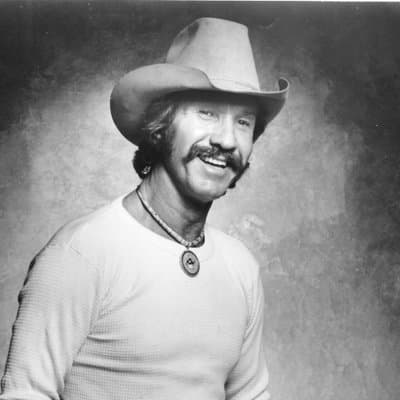
The Haunting Retelling of a Desert Tragedy
A long-form prequel that immortalized the doomed woman whose wicked beauty led a cowboy to his grave.
For those of us who grew up on the dusty trails of Western lore and the soulful serenades of Marty Robbins, certain songs are more than just tunes—they are cinematic experiences etched into the memory. None more so than the epic saga that began with “El Paso” in 1959. But the story, as any true fan knows, didn’t end with the cowboy’s dying kiss. Seven years later, in 1966, Robbins gifted us a true marvel of musical narrative: “Faleena (From El Paso)”.
This sprawling ballad, clocking in at over eight minutes, was released on the album The Drifter, serving as the detailed prequel to the smash hit. Unlike the original, which topped both the Country and Pop charts, “Faleena (From El Paso)” was a lengthy, ambitious album track that did not replicate its predecessor’s mainstream single success, a fact that perhaps adds to its mystique and reputation as a piece for the dedicated listener. Though precise high-ranking Billboard chart positions for this extended track are not widely recorded—it was a deep cut on a Marty Robbins album, a stark contrast to the chart dominance of “El Paso”—its cultural position as an essential part of the trilogy is undeniable. It was a bold move, sacrificing radio time for narrative depth, a testament to Robbins‘ commitment to the Western ballad as an art form.
The song’s meaning is the ultimate exploration of destiny and co-dependent tragedy. Where the original left us with the dying cowboy’s perspective—a romanticized, perhaps unreliable, account of a “wicked” Mexican maiden—“Faleena (From El Paso)” strips away the mystery to reveal the lonely, fated life of the woman at the center of the storm. It’s a profound shift in perspective, giving a voice and a soul to the seemingly capricious dancer.
The story, told in a third-person narrative, begins with Faleena’s birth in a New Mexico desert shack, accompanied by an ominous streak of lightning and a quieting of thunder—a celestial sign that marks her as a child of fate and perhaps a touch of the supernatural. The lyrics detail her difficult childhood and, at the age of seventeen, her flight from home to Santa Fe, where she learned to survive on her charms. The road finally leads her to El Paso and to the bright, alluring lights of Rosa’s Cantina. After a year there, the very cowboy from the first song enters her life. The sequel clarifies that he was the first man she did not hold in contempt; he was the first she truly loved, confirming a real relationship that the original song left ambiguous. For six fleeting weeks, they shared a genuine, passionate romance.
The second half of “Faleena (From El Paso)” meticulously recounts the moment from the original song: the jealous shooting of the rival cowboy. Here, the perspective shifts the guilt of the “foul evil deed” back to the lover’s insane jealousy, yet confirms Faleena’s reciprocal love. After his panicked flight, the cowboy’s return—a matter of a mere day in this version, contrasting with the original’s suggestion of a longer span—is met with gunfire. As the cowboy is fatally wounded, he motions for Faleena to stay out of the line of fire. After their desperate final kiss, a detail that now holds profound, heartbreaking truth, Faleena takes his gun and tragically ends her own life, falling atop his body in a final, eternal embrace.
The coda of the eight-minute masterpiece is the ultimate melancholic vision, weaving the tale into the very fabric of the landscape. The song concludes with the legend of their ghosts, still heard in the West Texas wind: “It’s only the young cowboy showing Feleena the town.” This final image transforms the dark tale of murder and despair into a timeless, spectral love story, ensuring that Faleena is not just a footnote in a cowboy’s tragedy, but a legendary heroine in her own right. For those of us who cherish the narrative power of music, Marty Robbins didn’t just write a sequel; he completed a great American ballad, offering solace, context, and a powerful, nostalgic connection to a bygone era of dramatic storytelling. It’s a song that proves that sometimes, the most enduring hits are not the shortest ones on the radio, but the long, winding roads that lead straight to the heart.